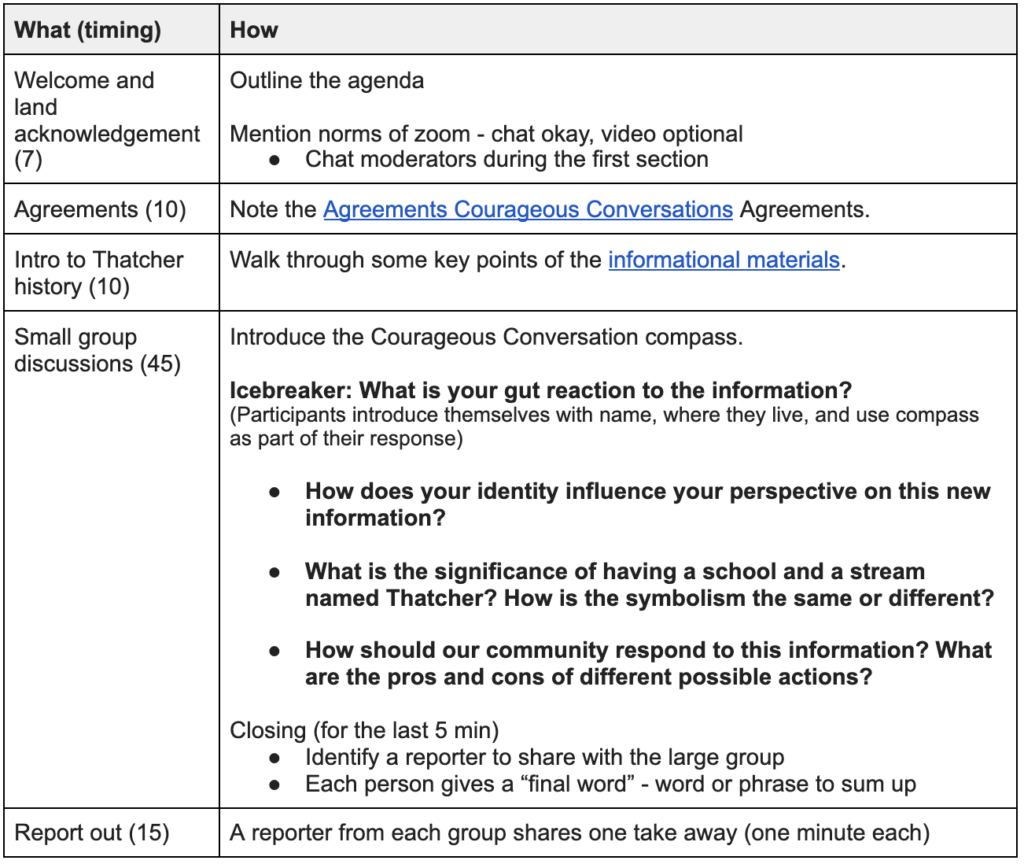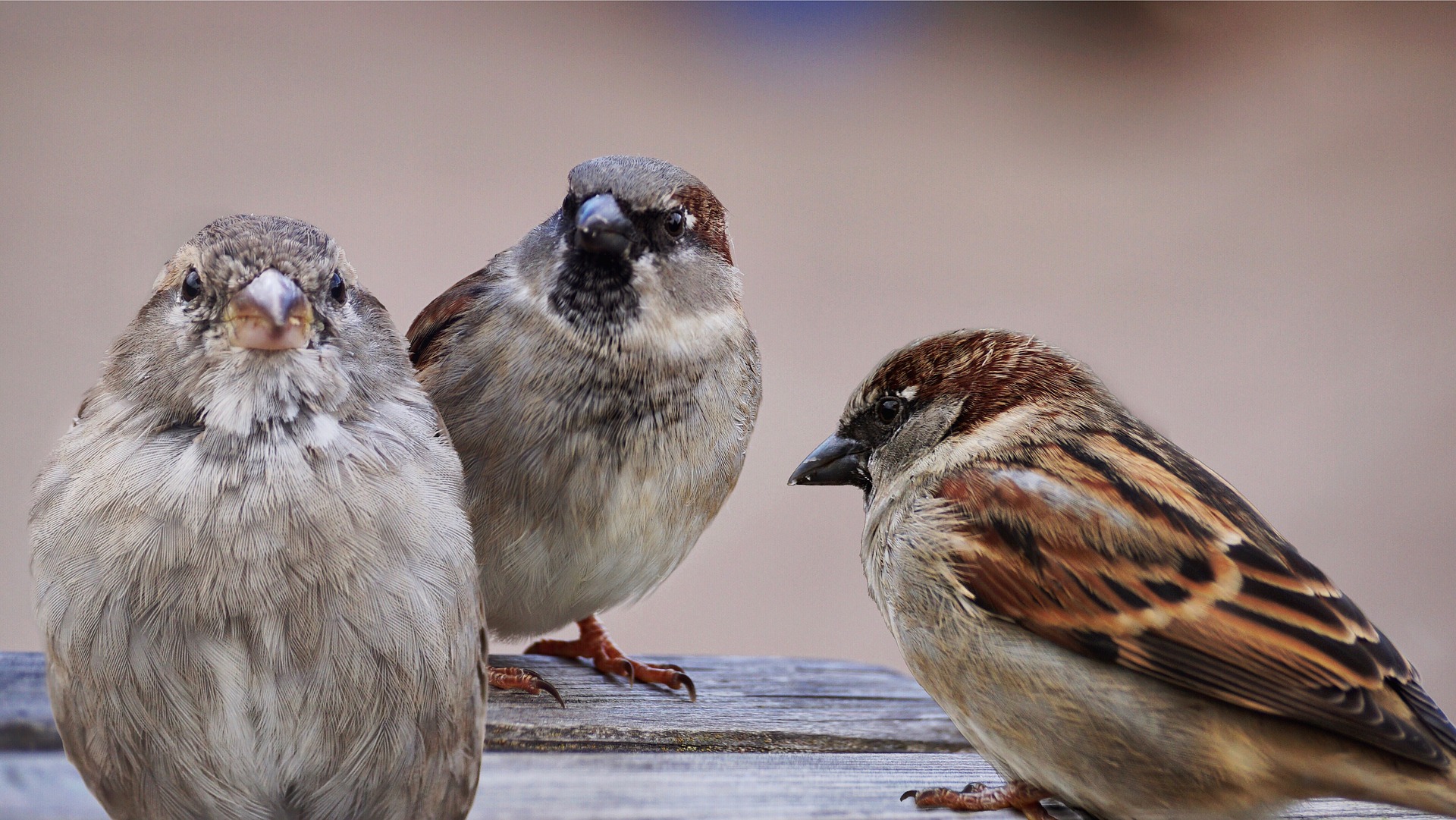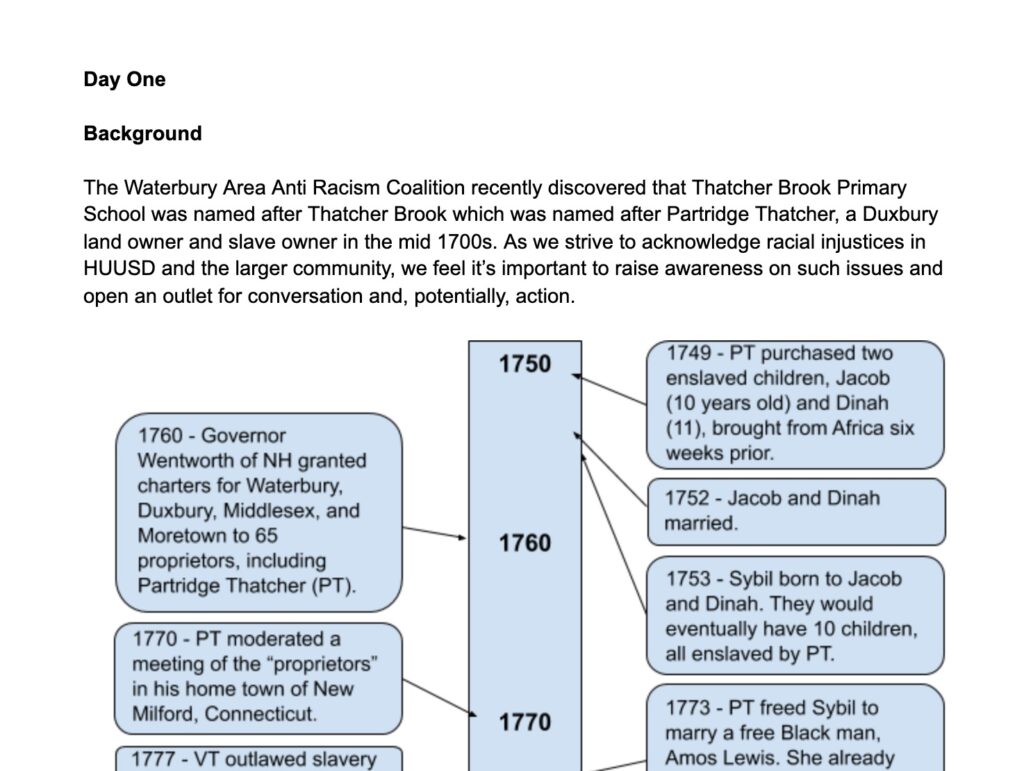How do we effectively engage people in our community who aren’t already predisposed to discuss race and the impacts of racism? How do we pull people into a community conversation on race? Especially people who aren’t already striving to be more antiracist? I’m not entirely sure, but I do know that the more community conversations we have, the more likely we will bring a greater portion of our community to the table… eventually.
I live in a predominantly white, rural community where many people do not explicitly experience the harmful impacts of racial bias nor understand the complexities of structural racism.
So I was intrigued by this email I received from a historian about the namesake of our local elementary, Thatcher Brook Primary School:
“I wonder how people in town would feel if they knew that Partridge Thatcher and his wife had held people in slavery.”
Indeed, how would my community react to this new information? That would become the guiding question for a community conversation that brought together students, educators, community members and historians to talk about real world, meaningful change.
How it started:
I received the email in response to an inquiry I had sent to Dr. Elise Guyette. I had written to her after hearing her on the Brave Little State podcast Remembering Vermont’s 19th Century Black Communities, which was largely based on her research. At the end of the episode she invited people to contact her to receive her database of early Black Vermonters.
Just a few weeks before I had been part of the formation of the Waterbury Anti-Racism Coalition (WAARC). I had been invited due to my role in facilitating a monthly series of Race Conversations for the Waterbury Public Library. Over the course of the prior year, a few dozen community members had participated in discussions of Ijeoma Oluo’s excellent book So You Want to Talk About Race?
Now, I believe in the power of dialogue about racism to help lay the foundation for transformational action.
As Oluo taught me, one of the reasons racism persists is because people, particularly white people, are not able to talk about it. Learning and unlearning how racism operates are the first steps toward dismantling and disrupting it.
Even so, upon learning this new information about the direct connection between the elementary school that my daughters attend and the institution of slavery, my first reaction was that we needed to take immediate action to get the name changed. But when I brought my obsessively assembled historical research to my WAARC friends, cooler heads prevailed. We were looking for inroads to raise awareness about racism and strengthen the collective antiracism commitment in our community.
Rather than rush to action, we decided to use this new information as a catalyst for collective learning and coalition building. It was time for a community conversation.
8 lessons learned from a community conversation on race
Now that I’m on the other side of the event, I’m happy to report that it was a success. Here are eight tips for anybody who wants to organize a community conversation about an issue related to racial justice, based on our experience.
1. Form a committed planning team
It was Ellie Odefey’s idea to focus on learning, rather than pushing right away to change the name of the school. She’s a student.
She’s also a member of WAARC and a student leader in the Rooted Organizing Committee (ROC) chapter of Harwood Union High School. ROC is a student-led socially justice oriented organization based in Vermont with a presence in several secondary schools. ROC focuses on grassroots strategies that will create change “from the roots up.” One of their values is community.
Ellie recruited some ROC student leaders to join WAARC members as a planning team. We had a multi-generational cross-racial group with plenty of experience organizing for change and facilitating conversations. We scheduled a weekly one hour meeting for the five weeks before the conversation. And then we were off to the races.
2. Learn from others
As we began planning, we researched how other processes have played out. We looked at the powerful project-based learning approach (.pdf) to renaming a school taken in Brookline, Massachusetts. We read up on efforts to rename schools and streets across the nation. And we reached out to folks in Vermont such as the Rename Negro Brook Alliance for tips.
Judy Dow generously provided guidance in the early stages of our planning. She is the Abenaki educator and activist who led the effort to change the name of the Dorothy Canfield Fisher Award due to the links of its namesake to the eugenics movement. She drew on her experience to emphasize the importance of having the background research compiled and clearly presented. “There will be pushback. Be ready.”
She also helped us understand the importance of involving students. Judy is an expert at supporting project-based learning that involves students in primary research about Vermont history. She recommended that some of the educators involved in the planning group bring the Partridge Thatcher history directly to their students.
Luckily, Ellie already had a plan for that.
3. Start the conversation in school(s)
When Ellie came up with the idea to make this into a learning experience, she wasn’t just talking about the community conversation. From the beginning, she wanted to bring the idea to Harwood Middle and High School students as well. She volunteered to create a lesson plan and worked with school administrators to distribute it to all 50 advisory teachers.
When Jonah shared Ellie’s work with the planning team, educators from other schools asked permission to adapt the lesson for younger grades. Eventually students across our district in multiple schools learned about Partridge Thatcher’s past and discussed connections to modern day racism.
For me, that is such a powerful example of a student exploring a Flexible Pathway to learning. An example of a school community being able and willing to support that student’s learning. And a way to tie a student’s passion for learning to real-world, authentic change.
Ellie’s lesson plan allowed students to process their own reactions and prepared them to participate in the community conversation. We hoped that they would go home and talk with their families about it as well. Because there was plenty of buzz well before the event.
4. Anchor the conversation
We wanted to make sure that the conversation wasn’t purely theoretical. But we weren’t trying to organize a debate, either. We wanted people to grapple with the implications of our community’s ties to slavery and racism in a way that was respectful and learning-oriented.
Educators on our planning team who had been teaching about racial justice busted out tools to support productive dialogue. We ended up using the agreements and compass from Courageous Conversations (for an example of these in action in a classroom, check out this unit on equity and identity from 6th grade social studies teacher Christie Nold).
We also wanted to make sure that people entered the conversation with the same basic historical facts at hand.
In response, I developed a packet of historical information. The packet presented the information in multiple ways, with a visual timeline, select quotes, and related background reading. Dr. Guyette provided feedback to ensure accuracy.
We wanted to provide people access to the information in whatever way best suited them. For some people, the bare basics might suffice, while for others they were going to click through to the source material. And some folks may not want to read at all. For them, we created an interactive timeline.
Jonah Ibson, a Harwood teacher and planning team member, worked with students to create audio clips to bring choice quotes alive.
Even people who didn’t attend the event were able to learn a lot from the informational materials.
5. Get the word out
About three weeks before the event we started advertising. We used multiple channels:
- Front Porch Forum – each Friday, volunteers posted to this local message board site
- Flyers – we created a simple poster (.pdf) and put it up around our community
- School newsletters – principals announced the event in their messages home to families
- Public library – the Waterbury Public Library co-hosted the event and included it on their website and in their emails to members
- Social media – we made announcements on the WAARC FaceBook page and some members tweeted about it
- Special invites – we sent customized email invites to local community leaders such as the School Board, Select Board, and historical societies
- Local newspaper – the Waterbury Roundabout did a story about the upcoming event.
There was a lively discussion on Front Porch Forum about the event. Most of the comments were skeptical, but a few people also expressed support. I wrote directly to many of the commenters to encourage them to join the discussion. In two cases people realized that they were being interpreted differently than they intended and they wrote follow up posts for clarification.
The pre-conversation conversation had begun.
6. Provide facilitators with plenty of support
Kathy Cadwell, philosophy teacher from Harwood Union High School, joined the planning team early on to lend her expertise on organizing community dialogues. She has worked with students to offer several Socrates Cafe events over the years. And she has an amazing website about strategies for scaffolding dialogue and her expertise and enthusiasm were invaluable.
We envisioned facilitator pairs made up of one community member and one student leader. Students from the planning team recruited fellow students who had facilitated other dialogues. Almost all of the adult volunteers ended up being educators from our school system.
The week before the event, we held a 90 minute facilitator training where we:
- Talked through the flow of the event
- Introduced tools such as norms we would be relying upon
- Provided time for the eleven pairs to meet their co-facilitator
- Role played a conversation and debriefed it
Based on the feedback at this training, we refined the facilitator guide. Most co-facilitator pairs met before the event to discuss roles and make sure they were totally set.
I can now say with certainty that they were well prepared. Because on the big night, they were amazing.

7. Execute your plan with purpose and flexibility
We asked participants to register via Google Form. In addition to giving us an idea of numbers, we were able to gauge what type of crowd we were going to have. We were able to see, for example, that the vast majority of people who had signed up were coming due to genuine curiosity about the subject.
Alysia Backman, a WAARC member and fantastic educator in her own right, handled the tech for the evening. She created Breakout Rooms on Zoom by asking the facilitator pairs to put their assigned number in front of their name. During the introduction, she randomly assigned all 80 participants and matched co-facilitators.
We shared duties and used a slide deck to keep us on track:
- I welcomed everyone;
- Gavin Thomsen, a student provided a powerful land acknowledgment;
- an educator went over the agreements;
- and Dr. Guyette did a quick review of and commentary on the historical materials.
Having Dr. Guyette provide historical perspective was incredibly powerful. She had put me in touch with one of the descendants of people who Thatcher had enslaved. I was honored by the fact that this woman, Karen Henry, and her husband, Dean Henry, attended the event. As Dr. Guyette presented they sent me a private chat message and asked to say a few words. The Henrys then shared the story of how they had learned about their ancestors’ connection to Thatcher. And they thanked the community for grappling with its past.
We had planned our agenda to the minute yet this unexpected portion of the evening was one of the most powerful parts. Many participants shared on the exit survey that this was something they would never forget.
How it’s going:
Our stated goals were to learn together and build community. And our exit survey suggested that we accomplished that. More than 90% of respondents answered positively on questions about whether the event it was a good use of their time and whether people were respectful of each other. The Waterbury Roundabout did a favorable follow up story as well.
Next, our planning team will go to the School Board to recommend that they initiate a process for changing the name of the school. We will recommend that they do so through a process that centers student leadership and collective learning.
We had Select Board and School Board members participate in the event and I’m optimistic that the renaming process will continue to be a source of growth for our community.
I’d imagine that some families had conversations about race that broke new ground. Perhaps some students took ideas home or adults picked up on the hubbub or some combination thereof. Although there was a lot of focus on the event itself, I’m hoping that the ripple effects had positive impact as well.
The biggest obstacle to fighting racism in my community is that many people deny that racism exists here. But to me, each community event about racism is part of an ongoing reckoning. For things to change, we’ll need every community, including predominantly white ones, to acknowledge the harmful impacts of racism. Especially on people of color but ultimately on all of us.
This event was a step toward normalizing consequential conversations about race in our community. As we learn together as a community, we build shared understandings and commitments to more effectively work towards racial justice. Together.
An audio version of this post appears below.



